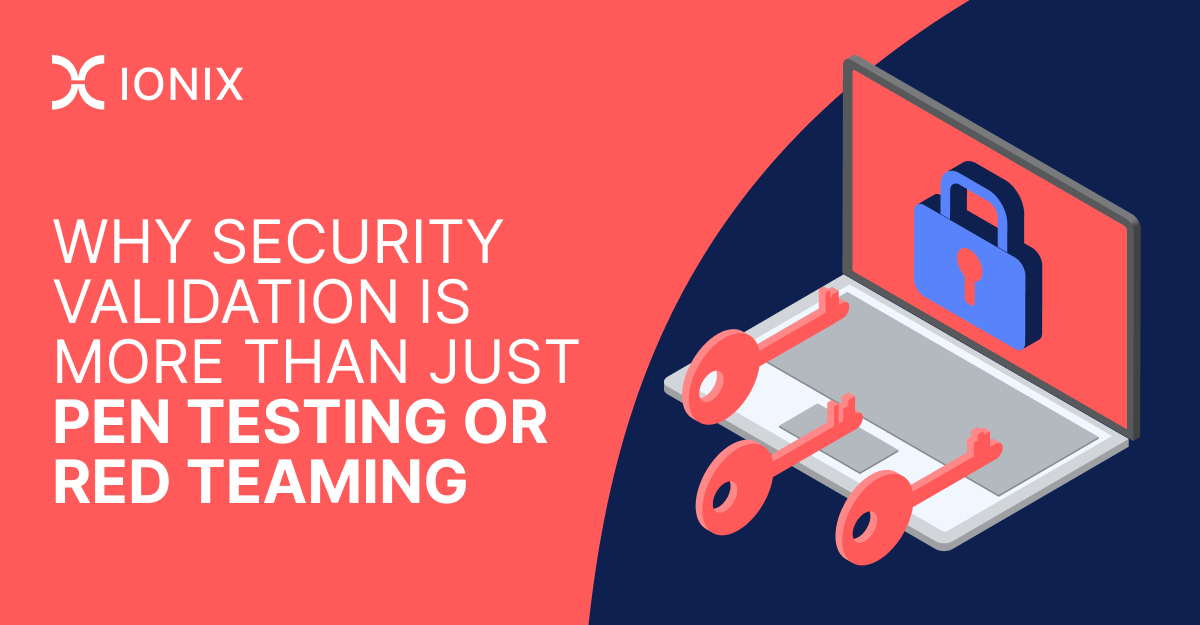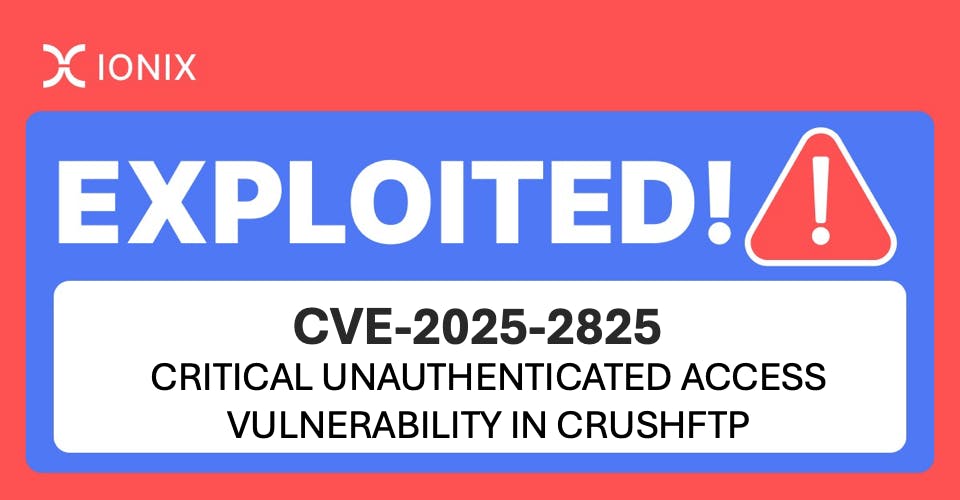Redefining Security Validation: How ASM Changes Pen Testing & Red Teaming

Attack surface management (ASM) has taken center stage in cybersecurity discussions in recent years. The key factor that sets ASM apart from traditional vulnerability management is its more informed and intelligent response to threats – “the attacker’s point of view” so to speak. What makes this possible is security validation. That’s what we focus on in this article.
In this article
What is security validation?
Security validation is a series of tests and techniques aimed at identifying if any exploits can successfully infiltrate or intrude on an organization’s digital estate. Security validation tools simulate an external attack on a software system to find potential attack vectors, misconfigurations, and gaps that can be exploited by attackers.
There are two methods that are typically used for security validation – Red Teaming and Penetration Testing.
Red teaming is a process designed to improve the security of an organization by rigorously challenging its policies, practices, systems, and assumptions through a simulated adversary attack. The purpose of red teaming is not just to test the organization’s physical, digital, and human defenses, but also to evaluate how well these entities respond to an attack and recover from it. Red Team techniques often include Breach and Attack Simulation tools.
Penetration testing, often referred to as “pen testing” or “ethical hacking,” is a cybersecurity practice designed to identify, test, and highlight vulnerabilities in a computer system, network, or web application. The process involves simulating cyberattacks under controlled conditions to assess the security of a system.
Red teaming covers a broader area of cybersecurity than pen testing, by aiming to test overarching cyber-readiness of an organization rather than just vulnerabilities and misconfigurations in a company’s systems.
Let’s zoom out and talk about the broader concept of security validation in the context of Attack Surface Management.
Attack surface management & security validation
Attack surface management is about looking at your organization’s security posture from the outside in. At IONIX, we describe it as “defend with the attackers’ perspective.” The reason this is so important is because ASM shows you the real risk your organization runs if it is attacked right now. Anything that ASM flags needs your attention right away, or there will be consequences.
Here are the key steps in ASM:
- Attack surface discovery
- Expose/identify risks to these assets
- Validate real-world exposures to eliminate false positives
- Prioritize all risks from highest to lowest
- Remediate threats based on priority
Security validation is central to ASM as it confirms whether the potential vulnerabilities found by ASM are actually exploitable by threat actors. It helps you save time and resources by identifying vulnerabilities that may have been identified by ASM as having an exploitable attack path but may be protected by another compensating security configuration. Validating ASM findings gives SecOps a confirmation signal on potential exploits, and is a key piece that is missing from traditional vulnerability assessment tools.
Why pen testing and red teaming aren’t enough
Security validation is critical for SOC teams looking to test and confirm potential exposures but approaches like red-teaming and pen testing have significant drawbacks. For starters, they are intrusive & resource-intensive. They require significant planning, resource allocation, tooling, and human hours. They often impact the performance of the system and require a warning to all teams when in progress.
Further, pen testing and red teaming do not cover the entire digital attack surface. Being limited by resources or peoples’ talent, they are most effective when testing a small focused area of the system. This means that they leave out vast areas of the attack surface which are potentially exploitable.
Finally, these approaches are infrequent & get outdated quickly. At best, they are probably performed on a monthly basis. Yet, technology stacks today change so fast that pen testing and red teaming findings are outdated the minute they are implemented.
Now that we understand the background of security validation, let’s dive into the benefits of security validation in the context of Attack Surface Management.
Security validation with IONIX
IONIX has a different approach to security validation, known as Exposure Validation. The idea is that SecOps teams can automate exploit simulation with non-intrusive security testing that won’t disrupt operations. The solution is part of a broader attack surface management platform. Here are the key highlights of IONIX’s Exposure Validation solution:
- Non-intrusive: IONIX’s non-intrusive security validation solution does not impact system performance in any way. It does not write to any database, or change any system component.
- Secure: It does not introduce new moving parts to the system, and hence, there are no new risks to deal with.
- Attack surface validation: IONIX’s security validation tool ensures comprehensive coverage across your entire digital supply chain. Whether it’s your own organization’s assets, or a third, fourth, or fifth-party – We’ve got you covered.
- Automate the process: Exposure validation will not take time away from core business tasks. IONIX’s solution reduces the need for manual testing and leverages software to automate and scale security validation.
- Identify zero-day threats: Thanks to the full-time research team at IONIX, you’ll always be in-the-know about current threats and vulnerabilities, but more importantly, know the specific assets impacted by those CVEs based on the exposure validation tests.
- Recommended remediation actions: IONIX doesn’t stop with security validation, but also suggests remediation tasks in the right order and priority, so you can get right to work protecting your system.
- Perhaps most importantly – IONIX’s Exposure Validation enhances manual security testing: The IONIX platform enables better pen testing and red teaming by specifying where those tests should start. So companies using IONIX alongside their intrusive activities like attack simulation, pen testing and red teaming bolster existing security efforts by focusing manual tests on areas of the attack surface that need to be tested.
Benefits of using security validation and ASM together
Here are the top reasons why security validation (like IONIX’s Exposure Validation) and ASM work better than red-teaming and pen testing alone:
- Real-world insight into potential risks: With security validation, you’re not looking at potential future risks that may materialize. These are risks that are active now and will be exploited if they aren’t already.
- No performance tax or security compromise: Unlike pen testing and red teaming, security validation (if done right) should not affect the production systems in terms of security or performance.
- A better-coordinated response: Security validation gives you metadata about each risk and enables you to prioritize the severity of each risk. This informs the next step of the ASM process – remediation.
- Reduce the attack surface: With its wide coverage security validation highlights parts of the system that can be better-protected or removed altogether. This results in a better security posture.
- Remediation even before an attack happens: Security validation allows you to spot risks much faster than traditional approaches and gives you a chance to patch the risk before an attacker gets wind of it.
- Stay compliant with regulations: Continuous security validation is the need of the hour. This allows you to stay secure, and comply with various regulations.
Now, let’s look at the process of security validation.
How to perform security validation
Unlike traditional approaches, the continuous security validation lifecycle is managed by a purpose-built tool that can operate in a ‘continuous’ manner without interruptions. Software can be tweaked as the system or business needs change.
- End-to-end coverage
To begin with the security validation solution should cover the entire system end-to-end, which involves mapping and indexing all system components. This step is performed by ASM and is a prerequisite for better security validation.
- Layer on metadata & context
The solution should record contextual metadata on each component of the system – things like environment location, resource utilization, access control, and more.
- Check external CVE data
The next step is to look at external data such as CVEs and documented exploits and correlate the likelihood of those affecting the organization.
- Simulated Exposure Validation
The solution should then attempt to breach the defenses of the organization and see if the identified risks are actually exploitable. This is a key step in security validation and should ideally be performed in a non-intrusive way.
- List all exploitable threats
The final step is to list all threats that are exploitable and that need immediate attention. And the ones that are not exploitable and are not real threats. This is the final output of security validation and is necessary for prioritization and remediation.
The outcomes of security validation
If you’re starting your journey into security validation and don’t have pen testing or red teaming already in place, you’ll reap the most benefits from a solution like IONIX’s Exposure Validation. You can continue to keep your teams lean and have them focus on higher priorities.
On the other hand, if you already have pen testing & red teaming in place, you can save a lot of time and effort by reducing mundane tests and allowing testing teams to perform higher-order testing. Save resources by allowing IONIX to pinpoint where testing will be most impactful. This frees up your team to focus on other aspects of security strategy and security posture.
Conclusion
Security validation is an essential part of ASM & is essential to stay ahead of threats. Whether you use pen testing and red teaming or not, IONIX provides a non-intrusive and comprehensive attack surface management and security validation solution that can integrate with and bolster your security posture.
FAQs
- Can security validation test against malware and ransomware attacks?
- Yes, security validation tests against threats like malware, ransomware, and more. It checks the security posture of your organization from the outside in.
- Compare: Security validation vs pen testing and red teaming
- Unlike pen testing and red teaming which are manual, resource-intensive, and sporadic efforts, IONIX provides Exposure Validation – a security validation solution that is software-driven, non-intrusive, and continuous.
- What type of organizations can benefit from security validation?
- Whether you’re just starting out with attack surface management or already have pen testing and red teaming in place you can benefit from Exposure Validation. It saves you time and effort that your teams can use to focus on higher priorities within the organization.






